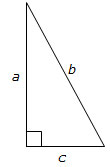
Incorrect. In the Pythagorean Theorem, c represents the hypotenuse of a right triangle.
Which figure best represents a triangle with sides a, b, and c in which the relationship a2 + b2 = c2 is always true?
A.

Incorrect. In the Pythagorean Theorem, c represents the hypotenuse of a right triangle.
B.
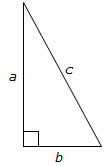
Correct! The Pythagorean Theorem, a2 + b2 = c2,
is best shown by this figure.
C.
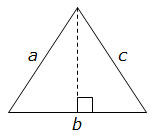
Incorrect. The Pythagorean Theorem, a2 + b2 = c2, is only true for right triangles.
D.
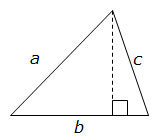
Incorrect. The Pythagorean Theorem, a2 + b2 = c2, is only true for right triangles.
Line segment k is a diagonal in each of the polygons shown. Which drawing contains enough information to determine the length of line segment k?
A.
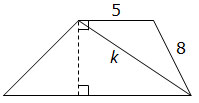
Incorrect. The Pythagorean Theorem is only true for right triangles, and the triangle whose sides are labeled appears to be an obtuse triangle.
B.
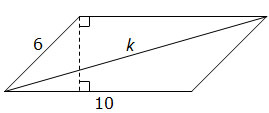
Incorrect. The Pythagorean Theorem is only true for right triangles.
C.
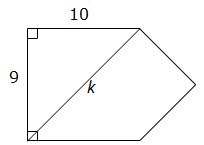
Correct! The triangle whose sides are labeled is
a right triangle, which means that you can use the Pythagorean Theorem to
determine the length of line segment k.
D.
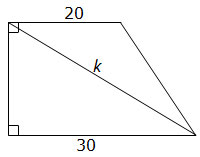
Incorrect. The Pythagorean Theorem is only true for right triangles.
The drawing below shows how 3 squares can be joined at their vertices to create a right triangle.
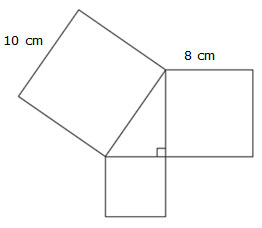
Which is closest to the area of the smallest square?
A. 2 square centimeters
Incorrect. Use the dimensions shown to determine the area of the squares, then the Pythagorean Theorem to determine the area of the smallest square.
B. 6 square centimeters
Incorrect. This number is the side length of the smallest square, but the question asked for the area.
C. 12 square centimeters
Incorrect. This number is twice the side length of the smallest square, but the area of a square is equal to the side length squared.
D. 36 square centimeters
Correct! The side length of the smallest square is 12 centimeters, and the area of a square is equal to the side length squared.
Look at the drawing shown.
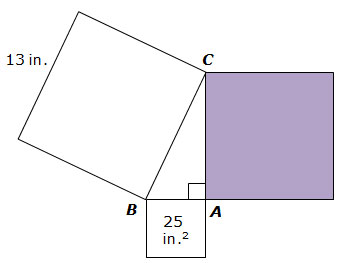
If ΔBAC is a right triangle formed by the placement of 3 squares, what is the area of the shaded square?
A. 12 square inches
Incorrect. This number is the side length of the shaded square. Use this information to determine the area of the square.
B. 24 square inches
Incorrect. The area of a square is the square of the side length.
C. 48 square inches
Incorrect. This number is the perimeter of the shaded square.
D. 144 square inches
Correct! The area of the largest square is 169 square inches, and the area of the shaded square is the difference of 169 square inches and 25 square inches.
Which figure can be placed along the side labeled x centimeters to make a model showing a correct representation of the Pythagorean Theorem?
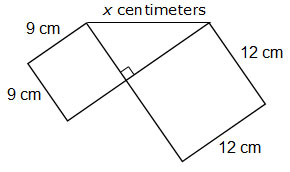
A.
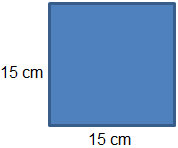
Correct! The side lengths of 9 centimeters, 12 centimeters, and 15 centimeters follow the Pythagorean Theorem.
B.
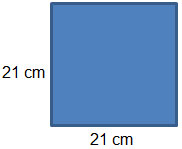
Incorrect. To follow the Pythagorean Theorem, the area of the square along the hypotenuse must equal the sum of the areas of the two squares along the legs.
C.
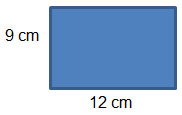
Incorrect. The figure along the hypotenuse should be a square.
D.

Incorrect. To follow the Pythagorean Theorem, the area of the square along the hypotenuse must equal the sum of the areas of the two squares along the legs.